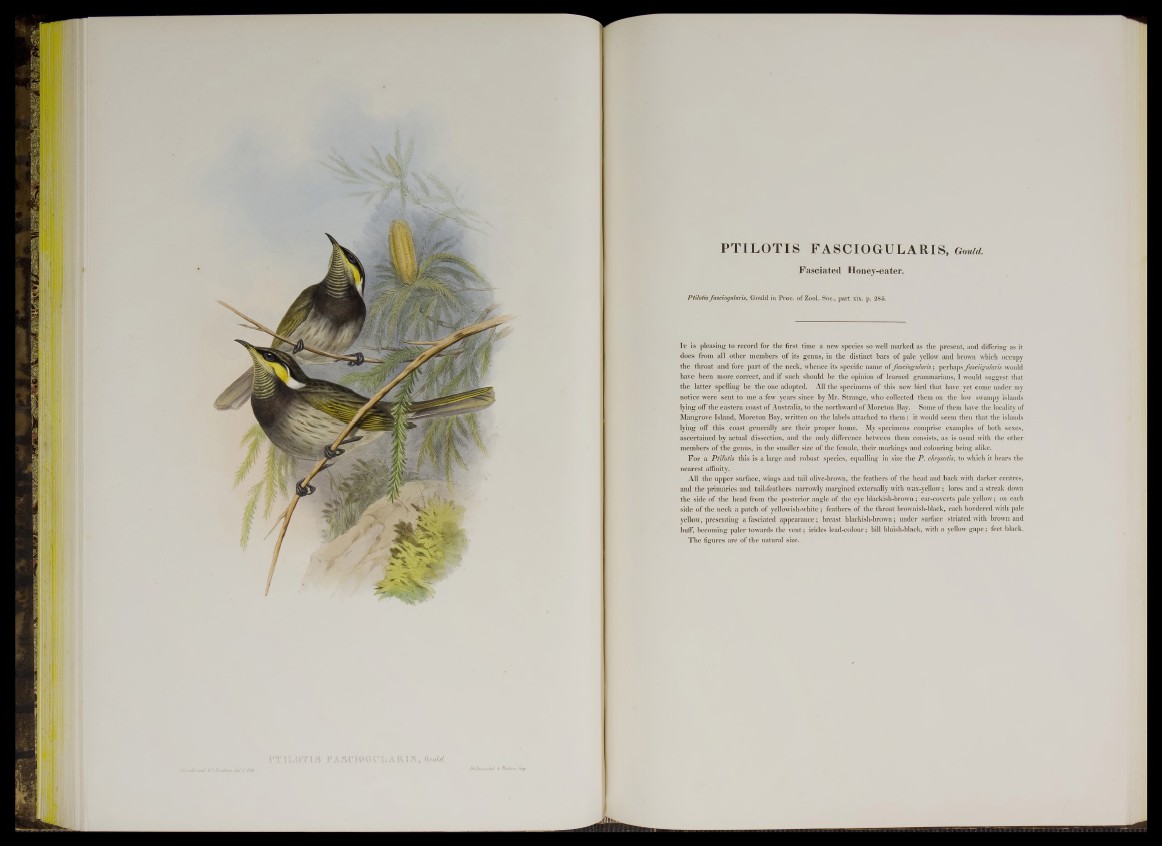
PTILOTIS FASCIOGULARIS, Gould.
Fasciated Honey-eater.
Ptilotis fasciogularis, Gould in Proc. of Zool. Soc., part xix. p. 285.
It is pleasing to record for the first time a new species so well marked as the present, and differing as it
does from all other members of its genus, in the distinct bars of pale yellow and brown which occupy
the throat and fore part of the neck, whence its specific name of fasciogularis; perhaps fasciigularis would
have been more correct, and if such should be the opinion of learned grammarians, I would suggest that
the latter spelling be the one adopted. All the specimens of this new bird that have yet come under my
notice were sent to me a few years since by Mr. Strange, who collected them on the low swampy islands
lying off the eastern coast of Australia, to the northward of Moreton Bay. Some of them have the locality of
Mangrove Island, Moreton Bay, written on the labels attached to them: it would seem then that the islands
lying off this coast generally are their proper home. My specimens comprise examples of both sexes,
ascertained by actual dissection, and tbe only difference between them consists, as is usual with the other
members of tbe genus, in the smaller size of the female, their markings and colouring being alike.
For a Ptilotis this is a large and robust species, equalling in size the P. chrysotis, to which it bears the
nearest affinity.
All the upper surface, wings and tail olive-brown, the feathers of the head and back with darker centres,
and the primaries and tail-feathers narrowly margined externally with wax-yellow; lores and a streak down
the side of the head from the posterior angle of the eye blackish-brown; ear-coverts pale yellow; on each
side of the neck a patch of yellowish-white; feathers of the throat brownish-black, each bordered with pale
yellow, presenting a fasciated appearance; breast blackish-brown; under surface striated with brown and
buff, becoming paler towards the vent; irides lead-colour; bill bluish-black, with a yellow gape; feet black.
The figures are of the natural size.